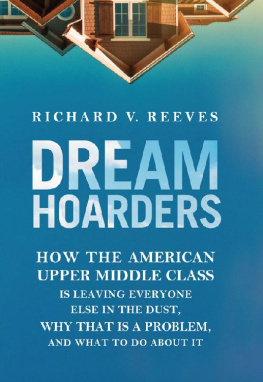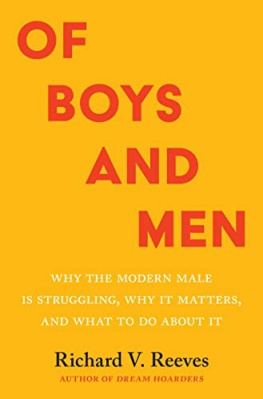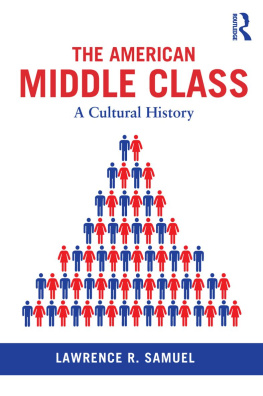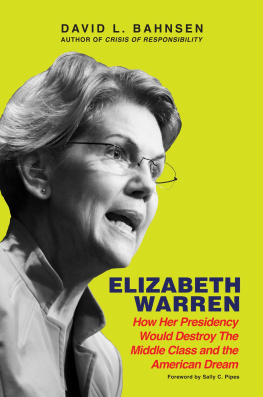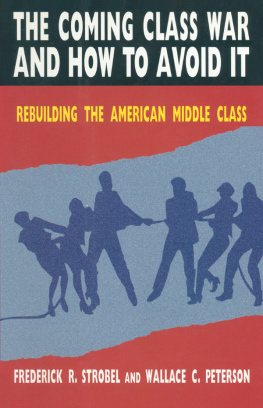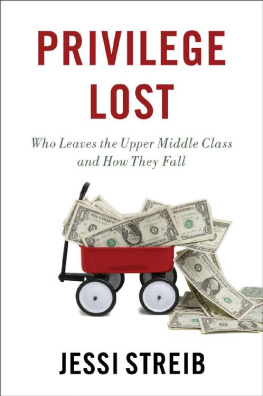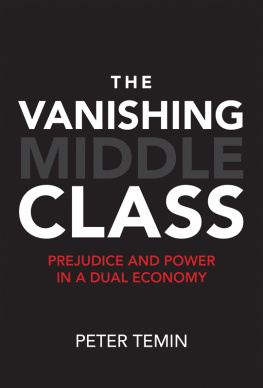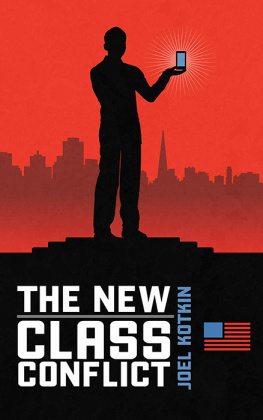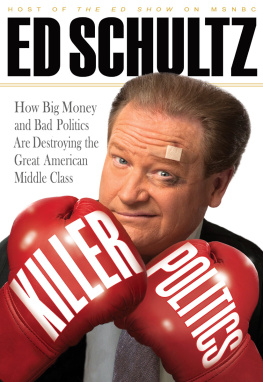RICHARD V. REEVES
Washington, D.C.
1775 Massachusetts Avenue, N.W., Washington, D.C. 20036
All rights reserved. No part of this publication may be reproduced or transmitted in any form or by any means without permission in writing from the Brookings Institution Press.
The Brookings Institution is a private nonprofit organization devoted to research, education, and publication on important issues of domestic and foreign policy. Its principal purpose is to bring the highest quality independent research and analysis to bear on current and emerging policy problems. Interpretations or conclusions in Brookings publications should be understood to be solely those of the authors.
Library of Congress Cataloging-in-Publication data are available.
ISBN 978-0-8157-2912-9 (cloth : alk. paper)
AT THE END OF JANUARY 2015, Barack Obama suffered an acute political embarrassment. A proposal from the budget hed sent to Congress was dead on arrivalbut it was the president himself who killed it.
The idea was sensible, simple, and progressive. Remove the tax benefits from 529 college saving plans, which disproportionately help affluent families, and use the money to help fund a broader, fairer system of tax credits. It was, in policy terms, a no-brainer. You can easily see how the professorial president would have proposed it. But he had underestimated the wrath of the American upper middle class.
As soon as the administration unveiled the plan, Democrats started to quietly mobilize against it. Representative Chris Van Hollen from Maryland (now a senator) called his colleague, House Minority Leader Nancy Pelosi. Pelosi happened to be traveling with Obama from India to Saudi Arabia on Air Force One. As they flew across the Arabian Sea, she persuaded the president to drop the reform. The next day, White House spokesman Eric Schultz declared that the 529 plan had become a distraction from the presidents ambitious plans to reform college financing.
The episode was a brutal reminder that sensible policy is not always easy politics, particularly when almost every person writing about, analyzing, or commenting on a proposal is a beneficiary of the current system. Pelosi and Van Hollen both represent liberal, affluent, well-educated districts. Almost half of their constituents are in households with six-figure incomes. I should know: Van Hollen was my congressman at the time. My neighbors and I are the very people saving into our 529 plans. More than 90 percent of the tax advantage goes to families with incomes in the top quarter of the distribution.
As Paul Waldman noted in the Washington Post , the proposal was targeted at what may be the single most dangerous constituency to anger: the upper middle classwealthy enough to have influence, and numerous enough to be a significant voting bloc. Like the flash of an X-ray, the controversy revealed the most important fracture in American society: the one between the upper middle class, broadly defined as the top fifth of society, and the rest.
The triumph of Donald Trump also exposed some dangerous fault lines in Americas class structure. It is a mistake to attribute the result of the November 2016 election to a single cause. Years of work lie ahead for social and political scientists picking over the data and trends. But it is pretty clear that Trump attracted the support of many middle-class and working-class voters, especially whites, who feel left out or left behind.
Race played a significant role here, with whites reacting (almost entirely incorrectly) to a sense that Americans of color
President Trump tapped into this white anxiety, putting issues of race and ethnicity at the core of his campaign. Just over half (58 percent) of whites voted for him. But class counted, too. Trump secured the support of two-thirds (67 percent) of whites without a college degree, helping him to narrow wins in swing states in the Midwest.
There is one good reason why many Americans may feel as if the upper middle class is leaving everyone else behind: They are.
Americans in the top fifth of the income distributionbroadly, households with incomes above the $112,000 markare separating from the rest. This separation is economic, visible in bank balances and salaries. But it can also be seen in education, family structure, health and longevity, even in civic and community life. The economic gap is just the most vivid sign of a deepening class divide.
Inequality has become a lively political issueindeed, the defining challenge of our time, according to Obama. But too often the rhetoric of inequality points to a top 1 percent problem, as if the bottom 99 percent is in a similarly dire situation. This obsession with the upper class allows the upper middle
At first glance, Trumps success among middle-class whites might seem surprising, given his own wealth. But his movement was about class, not money. Trump exuded and validated blue-collar culture and was loved for it. His supporters have no problem with the rich. In fact, they admire them. The enemy is upper middle-class professionals: journalists, scholars, technocrats, managers, bureaucrats, the people with letters after their names. You and me.
And here is the difficult part. However messily it is expressed, much of the criticism of our class is true. We proclaim the net benefits of free trade, technological advances, and immigration, safe in the knowledge that we will be among the beneficiaries. Equipped with high levels of human capital, we can flourish in a global economy. The cities we live in are zoned to protect our wealth, but deter the unskilled from sharing in it. Professional licensing and an immigration policy tilted toward the low-skilled shield us from the intense market competition faced by those in nonprofessional occupations. We proclaim the benefits of free markets but are largely insulated from the risks they can pose. Small wonder other folks can get angry.
The upper middle class has been having it pretty good. It is about time those of us in the favored fifth recognized our privileged position. Some humility and generosity is required. But there is clearly some work to do in terms of raising awareness. Right now, there is something of a culture of entitlement among Americas upper middle class. Partly this is because of a natural tendency to compare ourselves to those even better off than us. This is the we are the 99 percent problem. But it is also because we feel entitled to our position since it results from our own merit: our education, brains, and hard work.
I think it reflected something much worse. The lawmakers were fairly honestly reflecting the views of their constituents and reacting to commentary in the media. But there certainly was a lack of interest in self-reflection by the upper middle class. Those of you who dont follow tax history closely may not recall that it was George W. Bush who, in 2001, gave us the chance to grow capital tax free in 529 plans. (When Republicans proposed it during Bill Clintons second term, he promptly vetoed it.) Look how a regressive, Bush-era tax cut can become so precious to the upper middle class, including its most liberal members.
You may have noticed that I am often using the term we to describe the upper middle class rather than they. As a Brookings senior fellow and a resident of an affluent neighborhood in Montgomery County, Maryland, just outside DC, I am, after all, writing about my own class. This is not one of those books about inequality that is about other peopleeither the super-rich or the struggling poor. This is a book about me and, likely, you, too.

